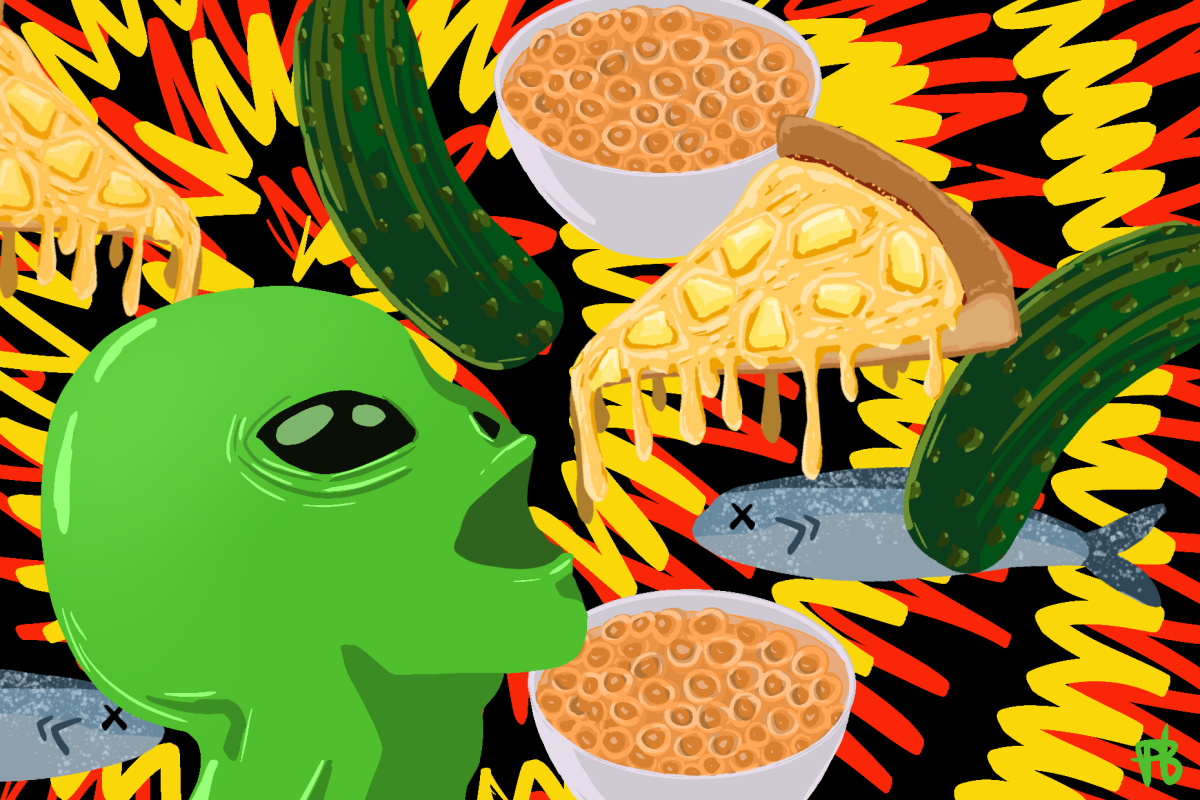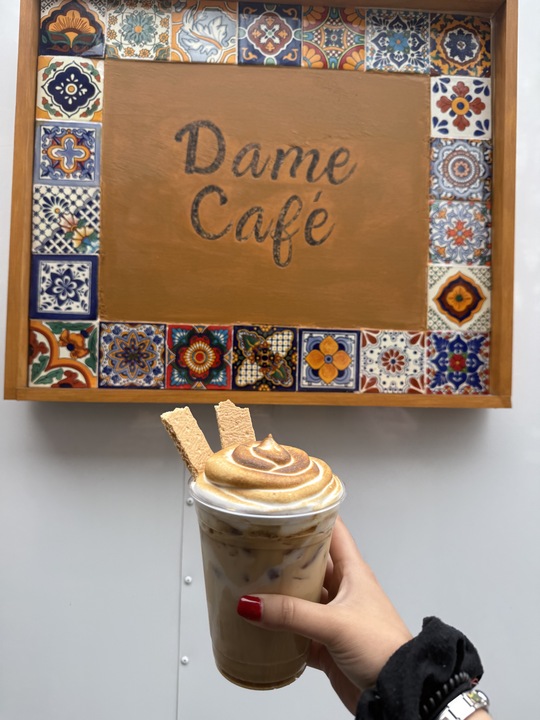The quickest way to get to know someone? Ask them what their hot take is. What’s their unpopular opinion about universal human experiences or topics?
Depending on the topic, the conversation can turn controversial but can be very revealing— especially when it comes to food.
I decided to take to the streets of UT to ask students what their culinary hot takes were, and I didn’t stop there. I needed to know why students felt the way they did, and believe me, some hot takes merited a deep explanation.
Hot Take One: Raw onions are a perfect side dish
Collette Crosby, a freshman corporate communication major, said that raw onions are her preferred side dish.
“I cut them up in slices, and I can just eat them alone,” she said.
This onion accompaniment began when Crosby was around 7 years old and her parents made an onion boil. She said she’s unsure whether or not the habit began because she enjoyed the taste of a solo onion or just what it added to her meal.
“It’s probably that I just got used to it,” Crosby said. “It was something that could make my food taste good.”
When asked how often she eats an onion, Crosby said with almost every meal, and always in slices like one might find on a burger. Any kind of onion will do, Crosby said, though green onions add a little “wow” factor to some dishes.
While I don’t think I’m brave enough to try Crosby’s hot take, I admire her commitment. I agree, onions are flavor boosters, but after that hot take, I’m not sure where to draw the line.
Hot Take Two: Cheese-less pizza
Journalism sophomore Ansley Denison was ready to bring pizza to the hot-takes table, but not the basic pineapple-on-pizza trope. No, she had thoughts about what some would argue is pizza’s vital component and main ingredient.
“I prefer pizza with no cheese on it,” Denison said. “I just put marinara sauce, pepperoni, pineapple and onions, and it’s delicious.”
Denison said that the stretchiness of cheese puts her off as well as the taste. She’s also not afraid to ask for it off at restaurants, which is a level of confidence I strive to have one day.
“I’ve always been hated on for it, but I’m proud,” she said.
Me personally? I am a cheese advocate and believe that next to the crust, it can make or break a pizza (and no, I will not comment on the fact that I’m lactose intolerant).
Hot Take Three: Chefs don’t automatically have a favorite food
Not all hot takes are about specific foods.
Judge Baskin, a sophomore journalism and plan II double major, had a unique response to my hot take question.
“Not everyone has a favorite dish,” Baskin said. “Actually, few chefs have a favorite dish.”
Baskin said he worked as a line cook for four years in high school. Whenever he mentioned his job to people who weren’t cooks, the most persistent question he got was about his favorite dish. He didn’t have an answer, and he was more than fine with that.
“I cannot get over how annoying it is,” Baskin said. “Not all chefs have a favorite dish, and it gets really annoying when you ask them.”
Making a mental note now to never ask cooks or chefs about their favorite dishes when I first meet them.
Hot Take Four: Orange juice and chocolate chip cookies
You’ve heard of milk and cookies but what about orange juice and cookies?
Joseph Gomez, a senior aerospace engineering major, said this unlikely pairing was one of his favorites.
“I think that the sweet and tart mix very well,” Gomez said. “And especially if you have a crunchier chocolate chip cookie, the orange juice softens it up, and the taste of the orange juice with the chocolate chip is actually really good.”
While he’s not sure whether this controversial combo beats cookies and milk, there was one important distinction Gomez made: no dipping, just sipping. There will be no dunking of the cookie in the juice, he said, only a sip alongside each bite.
I am widely intrigued but equally afraid to ever try this. While I have heard of chocolate and orange combinations, this one might be a step too far for me.
Hot Take Five: There’s no such thing as American food
French fries, hamburgers, barbeque.
All American foods, right? Wrong, according to journalism sophomore Hallie Diamant.
“There’s no original American cuisine,” said Diamant. “Burgers, those are not from America. French fries– not from America.”
She went on to list a few more typically “American” foods and their countries of origin. Hamburgers, for example, are most often attributed to the Hamburg steak from Germany. French fries are of Belgian descent. Hot dogs evolved from the German frankfurter or weiner. While Diamant appreciates what has been dubbed as American food, she said that none of it is native to the country.
“Every single food they’ve tried to Americanize has come from a different country,” Diamant said. “And they’ve put their own spin on it, but that doesn’t make it American food.”
This I can get behind.
Let’s face it: American cheese isn’t even real cheese. I’m not surprised that the rest of our cuisine is imitation too.
Hot Take Six: Whataburger > In-N-Out or P. Terry’s
Journalism sophomore Max Kinser thought long and hard about his hot take.
“I’ve decided no human should ever eat In-N-Out or P. Terry’s,” he said. “If you go just a bit further down the road, you’ll see an alternate restaurant that should always take precedence, and that’s Whataburger.”
Kinser said Whataburger’s menu variety outshines the other two burger joints’ smaller ones. Their menu has eight burger options as opposed to In-N-Out’s three and P. Terry’s six.
“You can get desserts, like a combo chocolate shake,” he said. “You can get an avocado bacon burger. There’s no avocados at In-N-Out.”
His reasoning didn’t stop there.
“Whataburger just feels like home,” Kinser said. “In-N-Out is a California establishment. P. Terry’s feels like it’s at a Disney Resort. Neither of those feels like home to me at all.”
The feeling Kinser gets from Whataburger is what solidified his stance.
“Whataburger just makes me happy,” he said.
While I have some strong opinions about Whataburger and In-N-Out french fries, I’ll save it for another article and just say that I think Kinser’s reasoning is very wholesome.
I, however, regret to inform you that I am the child of a granola, health-nerd mother, so I never had the pleasure of frequenting any of these popular restaurants as a kid.
Now, it’s only fitting that I offer my hot take.
Grace’s Hot Take: Pineapples aren’t for human consumption
You read that right, I firmly believe humans aren’t supposed to eat pineapples.
Let me tell you why.
Not only am I allergic to pineapple, but almost everyone I’ve talked to says the same thing happens when they eat one.
Their mouth itches and– if they’re like me– their tongue may swell. Last I checked, food isn’t supposed to do that to the general population.
Now, I can hear the angry protests, so I’ll dive into the science behind the tongue-eating enzymes in pineapples. A primary enzyme in pineapple is called Bromelain. Bromelain interacts with the mucous in saliva that protects your mouth. The weakening of the saliva mixed with the acidity of pineapple often causes a tingling or burning sensation. With that lovely thought, I rest my case.
Hot takes. Love them or hate them, they reveal a lot about a person.
Which one of these would you be brave enough to try?


































Amani • Nov 10, 2024 at 1:58 pm
Most of these I could get around but orange juice and cookies is WILD and onions BY THEMSELVES
(This ate btw hehehe)